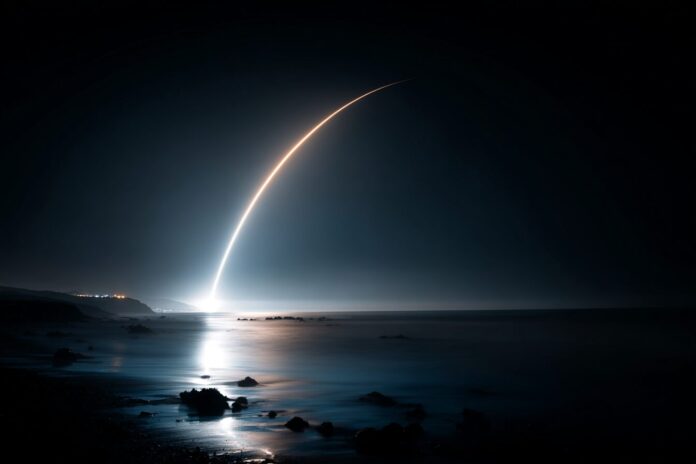Breaking New Ground: SpaceX’s Latest Starlink Deployment from Vandenberg
SpaceX continues to redefine the boundaries of modern space travel by pushing the limits of its technology. On September 2, 2025, the aerospace powerhouse successfully launched 24 Starlink satellites into low Earth orbit from California’s Vandenberg Space Force Base. This historic mission, designated Starlink 17-8, serves as a testament to the continuous strides taken in both reusable launch technology and satellite deployment methods. Most importantly, the mission reinforces SpaceX’s commitment to enhancing global broadband connectivity.
Because this launch utilized a brand-new Falcon 9 rocket, the event not only marked the evolution of engineering excellence but also heralded another step toward sustainable space operations. Besides that, each launch adds to SpaceX’s impressive portfolio, addressing the growing need for rapid and reliable internet access worldwide. For more vivid insights and live updates, please refer to the live coverage on YouTube and additional details provided by Spaceflight Now.
Mission Overview: Precision, Power, and Progress
The launch occurred at 8:51 p.m. PDT (03:51 UTC) from Space Launch Complex 4 East (SLC-4E) at Vandenberg. Notably, the mission marked the first flight for the booster B1097, which took off along a carefully calculated trajectory designed to achieve the intended polar orbit. This precise flight path over the vast Pacific Ocean highlights SpaceX’s prowess in navigation and trajectory planning.
After executing its critical role, the first stage separated and executed a flawless landing on the drone ship ‘Of Course I Still Love You,’ stationed in the Pacific. Because this landing occurred just a few minutes after launch, it further underscores the efficiency of reusable rocket technology. Moreover, each step of the process, from liftoff to touchdown, demonstrates how SpaceX is reducing the economic and environmental costs associated with space missions. For additional technical insights, consider reviewing this detailed coverage by Spaceflight Now.
Expanding the Global Internet Ecosystem with Starlink
The addition of 24 Starlink v2 Mini satellites significantly expands the ever-growing constellation designed to deliver global broadband services. Because these advanced satellites bring enhanced internet speed, reduced latency, and improved coverage, they play a crucial role in bridging the digital divide. In areas underserved by traditional broadband infrastructures, these satellites will provide reliable connectivity, thereby transforming how communities access digital resources.
Furthermore, the continuous expansion of the Starlink network facilitates increased competition in the satellite internet market, paving the way for unprecedented innovations in connectivity solutions. Therefore, this particular launch is not just a technical achievement but also a strategic move to ensure equitable access to digital services. Apart from technical benefits, the success of Starlink missions is also a beacon of hope for rural and remote areas worldwide.
Falcon 9: Redefining Reusability and Reliability
SpaceX’s utilization of a brand-new booster for this mission is a clear indication of the reliability and robustness embedded in the Falcon 9 design. Because each flight underlines the repeatability of the reusability model, this mission is especially significant in setting new standards in space exploration efficiency. Most importantly, the success of these boosters contributes to long-term cost reductions in launching payloads to orbit.
Besides that, the successful landing and recovery of the booster exemplifies SpaceX’s commitment to minimizing space debris and maximizing sustainable practices in aerospace operations. This focus on sustainability not only reduces operational costs but also aligns with global efforts to protect our orbital environment. Interested readers can explore more on SpaceX’s reusable technology by watching this detailed video analysis.
California’s Strategic Role in Space Launch Operations
Vandenberg Space Force Base remains a critical asset for the United States and the aerospace industry, particularly for missions requiring polar or sun-synchronous orbits. The base’s unique location allows launches to deploy satellites into specific orbit types that serve a variety of international markets. Because this operational flexibility is essential for both national security and commercial endeavors, Vandenberg continues to thrive as a hub of innovation in space launch technology.
Moreover, the facility supports an array of complex missions, including those targeting remote regions. Therefore, the strategic significance of California’s launch site extends beyond local benefits, contributing to global connectivity and advanced space research. For extended coverage on the role of Vandenberg, refer to the mission details available at Spaceflight Now’s live updates.
What’s Next for SpaceX and the Starlink Constellation?
SpaceX is on an ambitious trajectory for 2025, targeting a record 170 orbital missions over the course of the year. Because every successful mission not only broadens the Starlink network but also pushes the envelope of modern space technology, the future looks exceptionally promising. Most importantly, the ongoing deployment of satellite technology opens up new possibilities for continuous global internet coverage.
In addition to increasing the density of the satellite network, each launch serves as a stepping stone for future innovations. Besides that, the progress achieved thus far fosters intense competition in the satellite broadband arena, which in turn drives further technological advancements. With each Falcon 9 lift-off, SpaceX lays the groundwork for more efficient, cost-effective, and widespread connectivity solutions.
Key Launch Takeaways
- Liftoff Time: September 2, 2025, at 8:51 p.m. PDT (03:51 UTC)
- Launch Site: Vandenberg Space Force Base, SLC-4E
- Rocket: Falcon 9 (first flight of booster B1097)
- Payload: 24 Starlink v2 Mini satellites
- First Stage Recovery: Landed on the ‘Of Course I Still Love You’ droneship



